-
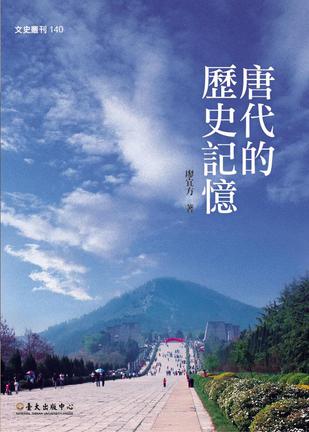
唐代的歷史記憶
本書分為上、下兩卷,分別採取思想心態與社會文化的取徑,探討歷史記憶中的時間與空間維度:久遠的歷史與晚近的歷史、遠方的歷史與近身的歷史,如何編織個人和群體的認識與認同。讓我們設想,唐代有位姓崔的士大夫,他在朝廷上遠舉堯舜治世的典範、近舉經驗見聞的前例進言立論;在同儕間,他誇耀家族、郡望與姓氏的輝煌歷史,對故鄉的史跡也瞭若指掌;當他出任地方官員,標舉漢代循吏為施政模範;當他出使江南,則拜訪各地的名勝古蹟:登臨賦詩、追憶六朝文人。本書從上述不同面相揭露唐代士人歷史記憶的面貌,最後提出歷史記憶與地理空間的問題:傳統士大夫如何克服歷史記憶與地理空間的錯位?古典文化的傳承是維繫認同的紐帶嗎?中國是一個文化想像的共同體嗎?文化認同是由政治權力建構而成?抑或文化有其自主的運作,進而導引政治的動向? -
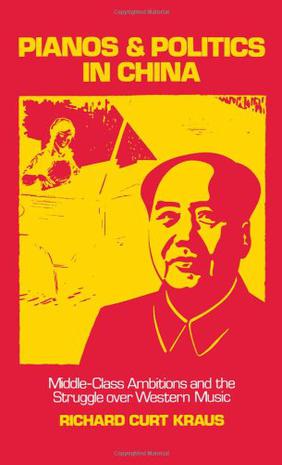
Pianos and Politics in China
In China, a nation where the worlds of politics and art are closely linked, Western classical music was considered during the cultural revolution to be an imperialist intrusion, in direct conflict with the native aesthetic. In this revealing chronicle of the relationship between music and politics in twentieth-century China, Richard Kraus examines the evolution of China's ever-changing disposition towards European music and demonstrates the steady westernization of Chinese music. Placing China's cultural conflicts in global perspective, he traces the lives of four Chinese musicians and reflects on how their experiences are indicative of China's place at the furthest edge of an expanding Western international order. -
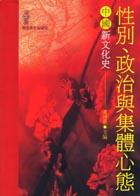
性別.政治與集體心態
本书选文主题集中在性别文化、文化政治以及集体心态三个课题,一共收录了八位学者的十篇文章。这八位学者中,历史学家占了五位,其余三位分属艺评家、文学批评家与社会学家。文化史在二十世纪中国现代史学成形过程中,固然有其地位,但当时的文化史普遍被定义为中国少数菁英心智活动的总合。而今新文化史研究崛起,一反先前之定义,师承后现代主义精神,认同边缘,拒斥中心,试图去搜寻历史上边缘处境的弱者心声。其间固然有研究方法与解读材料之困难,但透过积极与其他相关学科之对话,新文化史家已有能力去突破这层方法与材料之迷雾,进而窥见以往文化史前辈所难企及之堂奥。而本书,正是一部新文化史研究的最佳教战手册! 【篇目】 汉画石故事—汉画中的节女与才女 神仙与高僧—魏晋南北朝宗教心态试探 三至七世纪女性的社会形象塑模 五至六世纪北朝乡民社会意识 一次没有宣言的改革—唐玄宗朝的政治与文化 诗与画的辩证—试以王蒙与布雷克为例 家与乡:明代中后期岭南的地方社会与家族文化 建构的感情—明清家庭的母子关系 我以我血荐轩辕—黄帝神话与晚清的国族建构 革命与反革命—「清党」再思考 -
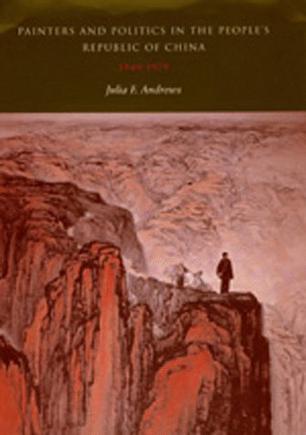
Painters and Politics in the People's Republic of China, 1949-1979
Julia Andrews's extraordinary study of art, artists, and artistic policy during the first three decades of the People's Republic of China makes a major contribution to our understanding of modern China. From 1949 to 1979 the Chinese government controlled the lives and work of the country's artists—these were also years of extreme isolation from international artistic dialogue. During this period the Chinese Communist Party succeeded in eradicating most of the artistic styles and techniques it found politically repugnant. By 1979, traditional landscape painting had been replaced by a new style and subject that was strikingly different from both contemporary Western art and that of other Chinese areas such as Taiwan, Hong Kong, and Singapore. Through vivid firsthand accounts, Andrews recreates the careers of many individual artists who were forced to submit to a vacillating policy regarding style, technique, medium, and genre. She discusses the cultural controls that the government used, the ways in which artists responded, and the works of art that emerged as a result. She particularly emphasizes the influence of the Soviet Union on Chinese art and the problems it created for the practice of traditional painting. This book opens the way to new, stimulating comparisons of Western and Eastern cultures and will be welcomed by art historians, political scientists, and scholars of Asia. -
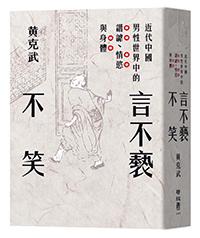
言不褻不笑
一部有關近代中國男性心態史的專著 以明清以來的笑話書、俗曲、豔情小說 與民初報紙的醫藥廣告等史料 探究明末至民初之間男性的情緒、欲望、身體與私人生活 並分析其所反映之思想、文化意涵。 《言不褻不笑:近代中國男性世界中的諧謔、情慾與身體》 分為諧謔、情慾與現代轉型等三篇, 關懷的焦點是近代中國在傳統至現代的轉換中, 男性世界中幽默感、情慾表達與身體觀念之間的關係。 作者黃克武教授認為,明清諧謔書刊與豔情小說反映了男性中心的社會中,男性菁英分子對身體、情慾與兩性關係的看法。這些看法一方面狂野大膽、繽紛多彩,以「謔浪詼諧」之手筆書寫情慾活動與身體感受,另一方面則與儒家倫理、道家養生與佛教果報等理念交織在一起。清末民初報紙的醫藥廣告主要反映男子對性的恐懼與煩惱。這些醫藥廣告顯示在20世紀初年之後,傳統的身體觀、情慾觀在西方現代醫學、國族主義、跨國公司全球市場、新興媒體的衝擊之下所發生的變化。直至今日這些文本仍廣泛地流傳於中文世界,而其中所反映出來的「縈繞於心的性幻想與性恐懼」以及「言不褻不笑」等心態亦仍普遍地存在,構成中國文化圈中男性的性別認知、情慾表述與隱私觀念的重要基礎。 作者黃克武透過不同時期之文本,探索感官經驗的書寫,展現明清以來男性世界中身體與諧謔交織而成的世界。這些笑話書、豔情小說、俗曲等被視為特定時空之中作者(或編者)與讀者所共同營造的文化出產,因而表現出時代的性格。這些明清的文本除了反映中國歷史情境下不同時期男性的幽默感之外,還與身體與情慾等議題有密切的關係。 《言不褻不笑》的探索從十七世紀開始,上篇的三章以明清時期諧謔性質之文本為中心,探討傳統男子諧謔與身體、情慾之糾葛。第一章描寫與分析明清時期諧謔文本,及其與身體、情慾主題之關聯。第二章將焦點集中於最早在乾隆年間出版的《笑林廣記》中的性笑話。上述兩章所分析的諧謔文本中情慾表達可以讓讀者反省以「禮教─情慾」二元對立來觀察明清歷史的研究取向。傳統社會的幽默不限於情色笑話,而有更複雜的圖譜。第三章以道光年間出版李汝珍所著的《鏡花緣》為基本史料,探討鴉片戰爭前夕中國社會中不同型態的幽默,及其在中國近代社會史與思想史上的涵義。 中篇的第四章與第五章主要研究明清時期的豔情小說之情慾表達,以及其中所反映男性之情色意識。第四章指出明清的豔情文本以狂野的想像建構一個不以繁衍後代為目的的情色世界。第五章以三個不同的豔情小說探討明清豔情小說所展現的情慾世界與情色意識。作者黃克武以空間的觀念作為切入點,探討豔情作家如何透過空間安排與逾越來書寫情慾活動。 下篇的三章探討「現代轉型」。第六、七章將焦點從明清時期轉移到民國初年,從明末到民初中國男子對身體與情慾的看法有不少的連續性,但是另一方面隨著西力的衝擊與全球化的發展,傳統的觀念也發生了許多變遷。作者黃克武利用民初報紙的醫藥廣告來分析廣告內容所反映出男性的夢想與恐懼。第六章處理報紙醫藥廣告如何反映與形塑近代中國在中西論述交織之下的疾病觀與身體觀。第七章進一步地從腎、血、腦三類型的廣告,分析代理跨國公司藥品的廣告商如何一方面延續本土的文化傳承、語彙觀念,另一方面借助國外報章相同商品之廣告形象來行銷其商品,總之,全球化與地方化的過程是交織在一起的,全球化的部分展現科學論述與全球跨國資本主義對中國社會的影響,地方化則顯示依賴傳統語彙的身體想像在西力衝擊之下仍有強勁的延續性。第八章探討「私領域」觀念在近代中國之發展。 另一方面,本書所收錄的這幾篇文章使用了以往史學研究較少運用的文學素材,來探究明清至民初男性世界中的諧謔、情慾與身體。 -
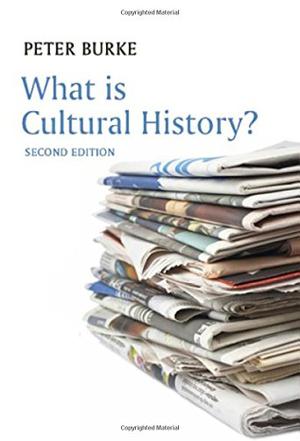
What is Cultural History
What is Cultural History? has established itself as an essential guide to what cultural historians do and how they do it. Now fully updated in its second edition, leading historian Peter Burke offers afresh his accessible guide to the past, present and future of cultural history, as it has been practised not only in the English-speaking world, but also in Continental Europe, Asia, South America and elsewhere. Burke begins by providing a discussion of the 'classic' phase of cultural history, associated with Jacob Burckhardt and Johan Huizinga, and of the Marxist reaction, from Frederick Antal to Edward Thompson. He then charts the rise of cultural history in more recent times, concentrating on the work of the last generation, often described as the 'New Cultural History'. He places cultural history in its own cultural context, noting links between new approaches to historical thought and writing and the rise of feminism, postcolonial studies and an everyday discourse in which the idea of culture plays an increasingly important part. The new edition also surveys the very latest developments in the field and considers the directions cultural history may be taking in the twenty-first century. The second edition of What is Cultural History? will continue to be an essential textbook for all students of history as well as those taking courses in cultural, anthropological and literary studies.